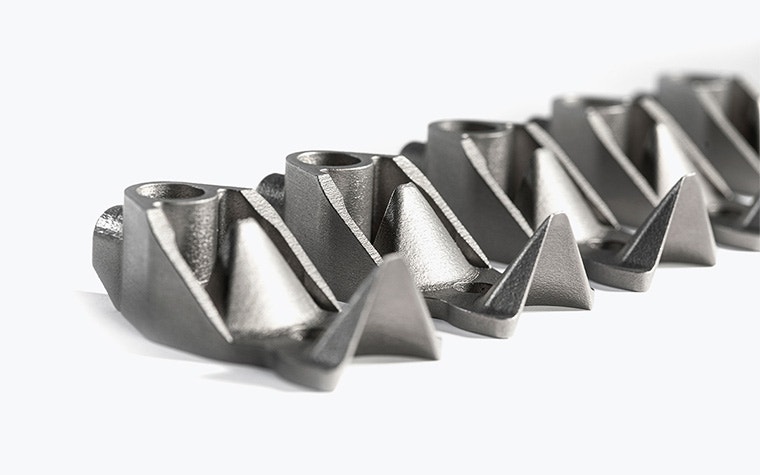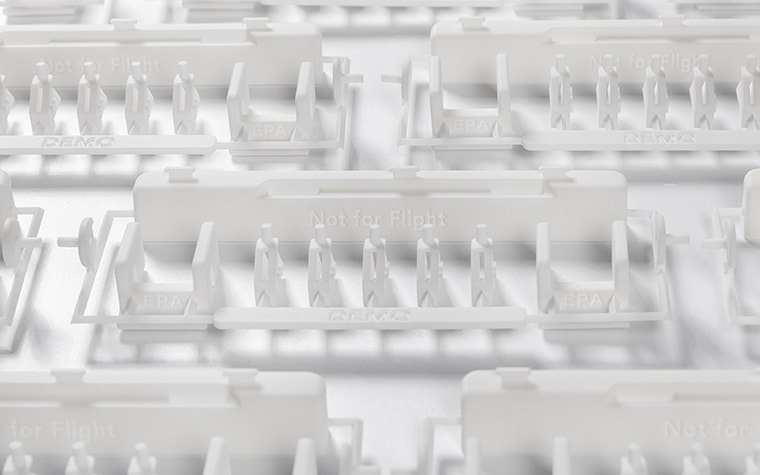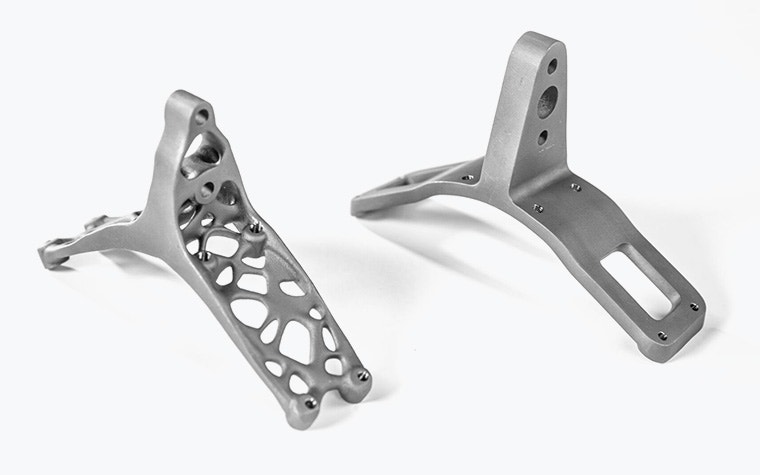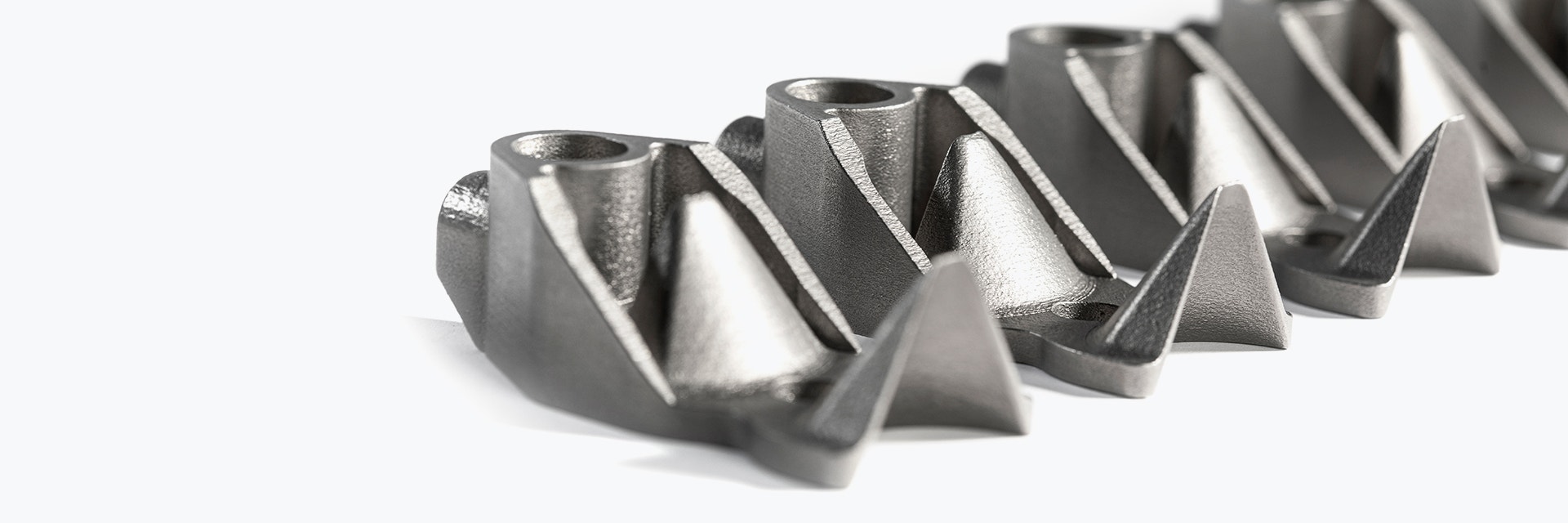EXPERT INSIGHT
Additive Manufacturing in Aerospace: 5 Steps to Take Before You Start

So, you’re ready to get on board with additive manufacturing and discover the benefits it brings to your aerospace supply chain — how can you do it successfully? If you follow these five steps before you start, you’ll be on the right track.
Choose the right application
Before you approach a 3D printing supplier, you should first make sure it’s the right technology for the job. While additive manufacturing is highly versatile, application spotting is an essential skill if you want to adopt it successfully. There are some areas and characteristics where AM really shines — if your part fits in one of these categories, you’ll have better results.
Spares and repairs
The longer an aircraft stays grounded, the more expensive it becomes. Whether repairing or replacing parts, it’s crucial to get spares as quickly as possible. However, it’s also not ideal to hold parts in storage — this leads to extra costs and the risk of obsolescence.
With additive manufacturing, you can keep every design up to date and print parts on demand, ensuring short lead times and fewer costs, making spares and repairs ideal applications for this technology.


Small series and one-off parts
One of additive manufacturing’s biggest advantages is the removal of minimum order quantities. You can print one part or one thousand, prototypes or end-use parts — order only what you need.
If your application requires a limited number of parts, additive manufacturing is a good choice.


Customization
Because every 3D-printed part starts with a digital file, there’s no need to reproduce a costly mold or tool when you want to update or change a design. This is great news for any part you’d like to customize. It’s easy to change the shape and size or add names, numbers, and logos to your design without extra post-processing steps.


Weight reduction and simplification
3D-printed parts tend to be lighter than their traditionally manufactured counterparts — it’s possible to include hollow spaces in your design that cut down on the amount of material you use without compromising on strength or integrity. Any weight reduction to your aircraft improves fuel efficiency, cutting down costs.
It's also possible to produce parts that would typically require assembly in a single piece, saving time and money. Look for components like paneling that could easily become more lightweight or parts with multiple pieces if you want to take advantage of these additive manufacturing advantages.


From Form-1 to CoCs: Know what certifications you need
With aerospace being such a highly regulated industry, it’s important to know that your chosen supplier — and the parts you produce together — comply with every requirement.
When you make your initial approach, be sure to mention exactly what you need and expect — anything from Certificates of Conformance to EASA approval. 3D printing is a trusted, mature technology in the industry, so if you need parts made to Form-1 accreditation, it’s certainly possible.
Sharing these details from the beginning ensures your supplier puts the right process and quality controls in place and helps them prepare any documentation your finished part might need.
Highlight your critical requirements
Tolerances, material characteristics, mechanical performance: every design comes with certain non-negotiables, especially when you’re working with parts that need to comply with strict regulations. It’s important to specify exactly what these are before you reach out to your supplier to ensure your project gets off to the right start. This way, they’ll know what to monitor and prepare for during the new product introduction (NPI) process.
Ask about your supplier’s material and process qualification
While this is an important question to ask regardless of your chosen production method, it matters more for additive manufacturing. AM is a process-intensive technology, meaning the properties of your finished part are defined during printing, not by the raw materials themselves.
As such, don’t hesitate to ask your supplier to show the data behind their offer. It’s the only way of knowing what you can expect from the product you’re buying.
Looking for series production? Ask about process and change control
Consistency and repeatability are key in series production — especially for parts with tight tolerances and strict quality standards. It’s important to know that your supplier has controls in place to guarantee every part meets your requirements.
At Materialise, for example, every project is broken down into three parts. It begins with the NPI process, where we assess the requirements and risks of your project, then identify how to handle them.
Once the process begins, we enter the control stage. This largely involves monitoring witness samples to verify that the process is stable and under control — we look at everything from tensile testing to density, dimensional accuracy, visual quality, and powder hardness.
Once the part is printed, our quality control operators ensure there are no defects in line with a unique defect catalog for aerospace and make all the necessary documentation. If you need a first article inspection (FAI) report or test reports on something like mechanical properties or the color of painted parts, we can take care of it.
5 key questions that make a great request
Information and transparency are two parts of a great customer-supplier relationship, and it can begin from the moment you send that first request. Before you hit enter:
Ask yourself:
1. Is my application right for additive manufacturing?
2. What certifications do I need?
3. What are my critical requirements?
Ask your 3D printing supplier:
4. How do you cover material and process qualification?
5. How do you ensure process and change control for series production?
Keep them in mind, share the right information, and your next additive manufacturing project is likely to be a successful one.
Share on:
You might also like
Never miss a story like this. Get curated content delivered straight to your inbox.
